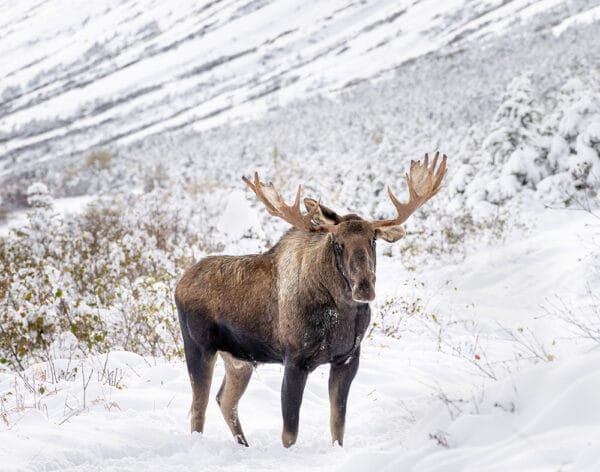
Iditarod five-time champion Dallas Seavey had to kill a moose in self-defense 14 miles out of the Skwentna checkpoint. It was 1:43 a.m. when race officials were notified on March 4th.
In 2015, Dallas stated he carried a Taurus stainless .357 magnum on the Iditarod trail. In 2015, Seavey said he had to use the revolver to defend one of his dogs two years earlier. The dog still lost a leg in the attack. This year, in 2024, Dallas had to shoot a moose that was attacking his dogs in the first hundred miles of the race. It is unknown if he still had the Taurus 605SS2 or a different firearm. From gunsandammo.com:
“I carry a beat-to-death, dirty, I mean horrible-looking .357 Mag. stainless Taurus 605SS2 with a 2-inch barrel,” he said. “It’s easy to grab, it always works, and if it falls through the ice on some river and never seen again, no big deal.”
Live Inventory Price Checker
Iditarod rule number 34 deals with the necessity of killing an animal in defense of self and/or the dog team.
Rule 34 — Killing of Game Animals: In the event that an edible big game animal, i.e., moose, caribou, buffalo, is killed in defense of life or property, the musher must gut the animal and report the incident to a race official at the next checkpoint. Following teams must help gut the animal when possible. No teams may pass until the animal has been gutted and the musher killing the animal has proceeded. Any other animal killed in defense of life or property must be reported to a race official, but need not be gutted.
Iditarod officials have ruled Dallas Seavey did not gut the moose properly. He will be penalized two hours of the race. It could cost him his sixth, record-setting win.
Dallas Seavey’s father, Mitch, who has won three Iditarod races, says he carries two guns, a .357 magnum, and a .44 magnum, to be ready for anything, according to USAtoday.com.
In 2022, Bridgett Watkins found her .380 pocket pistol was insufficient to stop an attack on her dog team while training for the Iditarod. From alaskapublic.org:
“It’s not that I wasn’t prepared. I wasn’t prepared to kill a moose, that’s correct,” Watkins said. “It’s not my intention to go around in February and hunt and kill an animal. This is like worst-case scenario defending my life.”
She did carry a .380 caliber gun because there are few people where she trains, and she keeps it to to deter or scare off animals. She has since upgraded to a larger caliber firearm after it didn’t stop the moose.
In March of 2022, a dog sled racer in Maine had to kill a moose that was attacking their dogs. From newscentermaine.com:
“When the team started pulling Caleb toward the moose, the moose turned its attention to the team and charged the team several times, stomping through the team,” Hayes explained.
“It probably didn’t know the difference between a wolfpack and the sled dog team, because it just charged,” Caleb said.
Caleb said the moose retreated every five minutes or so, only to come back with violent attacks at the puppies and the dogs. After about 15 or 20 minutes, Hayes told Caleb to take the snowmobile and try to find a gun from a neighbor while he stayed and held back the dogs.
The Maine attack lasted for 45 minutes while Caleb Hays went to different neighbors, trying to find a gun they could use to kill the moose. He finally returned with a Savage .30-06. The rifle was sufficient to stop the attack. A game warden ruled the Hayes could harvest the moose meat for their own use.
Moose are big animals in Alaska, typically weighing over 1,000 lbs. Gutting an animal that size alone takes real time and effort.
About Dean Weingarten:
Dean Weingarten has been a peace officer, a military officer, was on the University of Wisconsin Pistol Team for four years, and was first certified to teach firearms safety in 1973. He taught the Arizona concealed carry course for fifteen years until the goal of Constitutional Carry was attained. He has degrees in meteorology and mining engineering, and retired from the Department of Defense after a 30 year career in Army Research, Development, Testing, and Evaluation.







